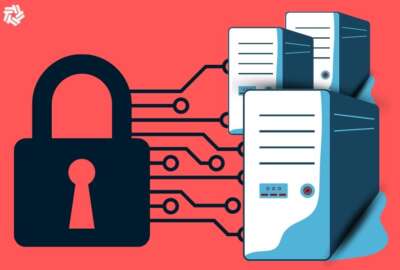Hubbard Radio Washington DC, LLC. All rights reserved. This website is not intended for users located within the European Economic Area.
New data could be difference-maker for move to shared services
OMB and Treasury have been working with the four federal financial management shared services providers to collect information on cost and performance. OMB Depu...
wfedstaff | April 17, 2015 5:04 pm
Agencies soon will be able to compare specific performance measures of the federal financial management shared service providers.
The Office of Management and Budget said the information will be the difference maker between this and previous attempts to get agencies to move to shared services.
Norman Dong, the deputy controller at OMB, said the Treasury Department has been leading this effort to measure the cost of the shared services and the performance of each of the providers.
“They have been working very closely with the actual shared service providers, spending a lot of time with them and agreeing upon the specific function that should be measured,” Dong said after a presentation Thursday at the CFO-CIO Summit sponsored by the Association of Government Accountants and AFFIRM in Washington. “One example is procure-to-pay. They are making sure we have an apples-to-apples comparison, and then they are working with [the providers] to gather, identify the data to have a more complete look at both cost as well as performance.”
Dong said the goal is for those agencies buying or looking to buy financial management services to know what they are getting and for how much. OMB expects agencies to use the data to make more informed decisions about moving to one of the four federal providers. The four financial management shared service providers are the General Services Administration, the Defense Finance and Accounting Service, the Interior Department’s Interior Business Center and Treasury’s Office of Fiscal Service.
Sharing of data begins this month
Treasury and OMB will begin sharing this data later this month with the four shared service providers. Then, Dong said, Treasury will share the information more broadly to current and potential shared services customers. 
OMB had limited success with shared services over the past decade. During the administration of President George W. Bush, OMB forced agencies to move to one of four payroll providers. OMB took a lighter approach with financial management, human resources, grants management and other shared services, telling agencies to move to these providers when their current systems reached the “end of life.”
While many small agencies took advantage of both federal and private sector providers, few large agencies transferred control of their systems to these organizations.
Dong said this time OMB has learned from its past mistakes, and the environment is more conducive to change with the broad acceptance of cloud computing and other new technologies.
Following up on modernization progress
Additionally, OMB mandated the use of shared services with its Share-First Strategy issued in May 2012.
As part of the strategy, OMB asked every shared service provider to develop a modernization plan to improve the delivery of their services. The administration has been meeting with the providers since last fall to ensure they are making progress on updating their systems.
The administration also established a requirement for agencies to move financial management shared services in March. A month later, OMB issued a shared services implementation guide and detailed a new database, called Uncle Sam’s List, of all available federal shared services.
“One of the things we heard from agencies is as they work with shared service providers, they have no clue in terms of how good of a deal they are getting,” Dong said. “Through this process, we’re trying to create greater transparency and, quite frankly, also a little bit more healthy competition among the shared service providers to be able to reassure the customers at the end of the day that we are keeping score here and if you feel you are not getting the best deal there should be some portable competition and you should be able to take your business elsewhere.”
Dong added that this is the theory OMB is purporting, but still has to work through how it would work.
“We feel that in order for the shared service model to work, agencies should be able to have choice and that choice should be informed by how well their providers are performing,” he said.
Dong said one positive sign that the acceptance of shared services is more likely is the fact that agencies are asking for cost and performance data so they can do an informed comparison.
Dong added that the fiscal 2015 budget process will detail the steps agencies need to take to move to shared services.
Industry’s role still unknown
OMB still hasn’t addressed in great detail industry’s role in this initiative. Its guidance doesn’t mention private sector participation, and officials never mention their ideas or plans.
Dong said vendors will mainly support the federal shared service providers. He said the government also must be able to benchmark against the private sector around cost and quality.
In many ways the financial management effort is just the tip of the iceberg. OMB is laying the groundwork to expand the shared services effort to human resources and procurement systems.
Lisa Schlosser, the deputy administrator in OMB’s Office of E-government and IT, said at the conference OMB will use the PortfolioStat 2.0 process to figure out how best to optimize financial management, HR and acquisition systems.
Dong and Schlosser said OMB is putting a lot of expectations on agencies to use data to make better decisions.
The Office of Federal Procurement Policy is leading an effort to collect data on how much agencies pay for common products and services. The prices paid portal is under development.
Dong used an example where one agency was paying between $21 a month and $98 a month for wireless services. He said the portal will help departments see the range and take steps to close the gap.
Reforming grants management is another initiative where data will play a big role. OMB also is reviewing more than 300 comments from its grants reform proposal issued earlier this year. Dong said the Department of Health and Human Services is taking the lead to standardize business processes and data elements around grant management.
Schlosser said federal CIO Steve VanRoekel, who is leading the government’s performance management efforts, wants to expand the IT-focused initiative that reduced the number of reports sent to OMB across all of government.
“We streamlined our data collected within e-government so we moved from multiple data collections, and often cases, I admit, redundant data collections to three quarterly data collections,” she said. “What Steve wants to do is take that philosophy and broaden it across OMB. He wants to look at all the data collections we ask the agencies to respond to and streamline those data collections in a more standard way and make sure they are not redundant.”
RELATED STORIES:
OMB gives agencies four months to figure out shared services
OMB mandates use of shared services for agency financial systems
Uncle Sam’s List launched to boost awareness of shared services
OMB’s revised PortfolioStat process simplifies IT reporting requirements
Copyright © 2024 Federal News Network. All rights reserved. This website is not intended for users located within the European Economic Area.
Jason Miller
Jason Miller is executive editor of Federal News Network and directs news coverage on the people, policy and programs of the federal government.
Follow @jmillerWFED
Exclusive
Artificial Intelligence
Read more





